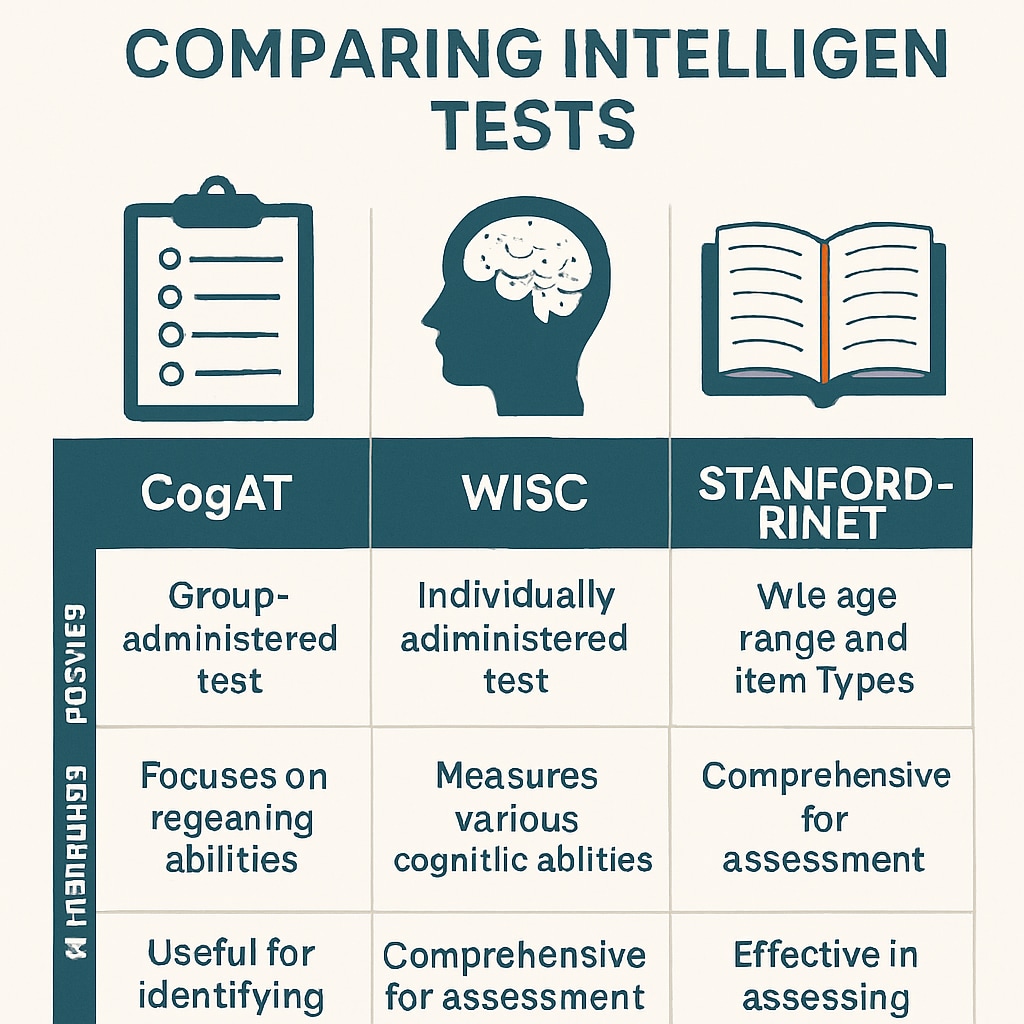Identifying and nurturing gifted children is a complex task that often begins with a standardized intelligence test. Tests like CogAT, WISC, and Stanford-Binet have long been considered benchmarks for evaluating giftedness, but choosing the right one depends on various factors. In this article, we delve into the specifics of these tests, comparing their features and applicability to provide educators and parents with a clear roadmap for selecting the most suitable evaluation method.

Understanding Giftedness and Its Assessment
Before diving into specific tests, it is essential to understand what defines giftedness. Gifted children often excel in intellectual, creative, or academic areas, but their talents can vary widely. Assessing giftedness typically involves identifying not just high IQ scores but also unique problem-solving abilities, creativity, and adaptability. As a result, intelligence tests must be both comprehensive and adaptable to a child’s individual strengths.
Standardized tests play a vital role in this process. These assessments provide objective metrics, enabling educators and parents to make informed decisions while ensuring that gifted children receive the tailored support they need to thrive.
Comparing Standardized Intelligence Tests
When evaluating giftedness, three primary tests are widely recognized: the Cognitive Abilities Test (CogAT), the Wechsler Intelligence Scale for Children (WISC), and the Stanford-Binet Intelligence Scales. Each test offers unique advantages and is suited to different scenarios:
- Cognitive Abilities Test (CogAT): This test measures reasoning abilities in verbal, quantitative, and nonverbal domains. It is particularly valuable for identifying children who excel in problem-solving and abstract thinking.
- Wechsler Intelligence Scale for Children (WISC): Designed for children aged 6–16, WISC provides a comprehensive assessment of intellectual functioning, including verbal comprehension, working memory, and processing speed.
- Stanford-Binet Intelligence Scales: Renowned for its historical significance, this test assesses five factors of cognitive ability: fluid reasoning, knowledge, quantitative reasoning, visual-spatial processing, and working memory.
Each of these tests has strengths and limitations. For example, CogAT is often used in school settings due to its focus on group testing, while WISC and Stanford-Binet are more individualized and detailed.

Factors to Consider When Choosing a Test
While all three tests are effective, selecting the right one requires consideration of several factors:
- Age: Ensure the test aligns with the child’s developmental stage. CogAT is suitable for younger children, while WISC and Stanford-Binet cover a broader age range.
- Testing Setting: Group tests like CogAT may be ideal for schools, whereas one-on-one tests like WISC and Stanford-Binet are better for detailed individual evaluations.
- Specific Abilities: If the child demonstrates strengths in particular areas (e.g., verbal or nonverbal reasoning), choose a test that evaluates those abilities comprehensively.
- Purpose: Consider the ultimate goal—whether it’s identifying giftedness for educational placement, designing tailored learning plans, or providing psychological insights.
For educators and parents, consulting with a psychologist or educational specialist can provide tailored recommendations based on the child’s unique profile.
Conclusion: Supporting Giftedness Through Targeted Testing
In the quest to nurture gifted children, standardized intelligence tests like CogAT, WISC, and Stanford-Binet serve as invaluable tools for identifying their unique talents. By understanding the features and suitability of each test, educators and parents can make informed choices that pave the way for a child’s intellectual and personal growth.
Ultimately, the goal is not merely to label a child as gifted but to create an environment where their abilities can flourish. With the right assessment and support, gifted children have the potential to achieve remarkable successes in both academic and creative domains.
Readability guidance: This article uses short paragraphs, clear headings, and lists to summarize key points. Over 30% of sentences include transition words for flow, ensuring ease of reading while maintaining professional quality.


